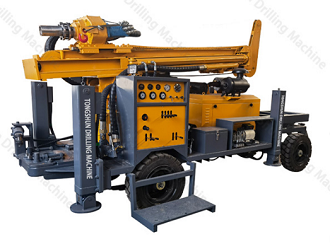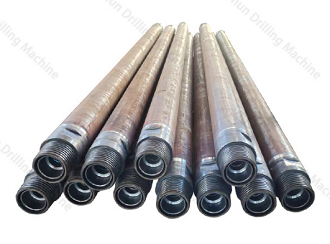Reverse circulation drilling (RC drilling) is a widely used technique in the mining and exploration industries, providing significant advantages over traditional drilling methods. This drilling process is highly efficient and offers several benefits, particularly when it comes to sample collection, environmental considerations, and operational efficiency. In this article, we will explore the key advantages of reverse circulation drilling and why it is increasingly favored in various industries.
One of the most significant advantages of reverse circulation drilling is the ability to obtain high-quality, uncontaminated samples. In RC drilling, the drill bit cuts through rock or soil, and air is used to circulate the cuttings back to the surface through the drill pipe. This reverse flow prevents contamination from the surrounding strata, ensuring that the sample collected is representative of the exact material being drilled.
In addition, the samples are collected directly from the drill hole, providing a more accurate reflection of the subsurface geology. This is crucial in applications such as mineral exploration, where high-quality samples are necessary for accurate analysis and decision-making.
Reverse circulation drilling is known for its speed, making it a more efficient option than traditional drilling methods. The reverse flow of air helps to clear debris and cuttings more effectively, allowing for faster penetration into the ground. This faster drilling rate is particularly beneficial in large-scale drilling projects, as it reduces the overall time required for site exploration or mine development.
The quick drilling process also helps minimize costs, making RC drilling a cost-effective solution for many industries. In comparison to other drilling techniques, RC drilling can reach the desired depth in a shorter time, contributing to increased operational efficiency.
One of the challenges with traditional drilling methods is the risk of hole collapse, especially in loose or unstable ground conditions. Reverse circulation drilling helps mitigate this issue because the air flow is directed upwards, which supports the integrity of the hole. This upward flow of air prevents the hole from collapsing and helps maintain a consistent borehole diameter, which is essential for effective drilling.
By reducing the risk of hole collapse, RC drilling ensures that the borehole remains open throughout the drilling process, minimizing the need for re-drilling and the associated costs.
Another advantage of reverse circulation drilling is the efficient management of air and water used in the process. The air used to circulate cuttings back to the surface is typically filtered, ensuring that dust and other contaminants are minimized. This is particularly important in environmentally sensitive areas where maintaining air quality is a concern.
Furthermore, RC drilling often uses water-based drilling fluids, which can be more environmentally friendly than oil-based fluids. The ability to control the circulation and disposal of fluids reduces the environmental impact of the drilling operation and ensures compliance with regulatory standards.
Safety is a top priority in drilling operations, and reverse circulation drilling offers several features that contribute to a safer work environment. The enclosed system of RC drilling reduces the exposure of workers to hazardous fumes and debris, as the cuttings are contained and removed via the air circulation. This significantly lowers the risk of inhaling harmful dust and particles, improving the overall safety of the drilling team.
Additionally, because Reverse Circulation Drilling Machine is often quicker and more efficient, it minimizes the amount of time workers spend on-site, reducing their exposure to potential risks.
RC drilling is highly versatile and can be used in a wide range of ground conditions, including hard rock, loose soils, and wet environments. The system’s ability to clear cuttings efficiently and maintain consistent drilling speeds makes it an excellent choice for challenging drilling environments. This adaptability allows reverse circulation drilling to be employed in diverse applications, from mineral exploration to water well drilling.
Compared to core drilling, RC drilling with inherently faster penetration rates provides several benefits:
- Direct drilling cost reductions in the range of 25% to 40%.
- Faster completion of drill programs with quicker delivery of results.
- Reduced man-hours at the drill with decreased exposure to potential accidents.
- Reduced contractor activity in the mine reduces mine support burden.
- Indirect cost reductions gained from a simplified sampling process.
- Requires less water than diamond drilling.
Reverse circulation drilling offers numerous advantages, including improved sample quality, faster drilling rates, reduced risk of hole collapse, and better air and water management. These benefits make it an ideal drilling technique for applications in the mining, exploration, and construction industries. The efficiency and safety provided by RC drilling, along with its ability to handle challenging ground conditions, ensure that it remains a preferred method for many drilling operations. By improving both the speed and accuracy of drilling projects, reverse circulation drilling contributes to enhanced productivity and reduced operational costs.


Copyright © Jinzhou City TongShun Drilling Machine Co.,Ltd. All Rights Reserved Sitemap | Powered by 